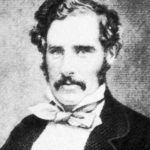Date of Birth: July 26, 1893
Zodiac Sign: Leo
Date of Death: July 6, 1959
Biography
George Grosz was a German-American artist known for his caricatural drawings and paintings that provided scathing critiques of the Weimar Republic in Germany. Born on July 26, 1893, in Berlin, Grosz became a significant figure in the Dada and New Objectivity movements. His work often depicted the decadence, corruption, and social decay of post-World War I Germany. Grosz’s style was heavily influenced by his experiences during the war and his disdain for the political and social climate of the time. Grosz attended the Dresden Academy of Fine Arts and later the Berlin College of Arts and Crafts. In 1914, he volunteered for military service but was discharged due to health issues. His experiences during the war deeply affected his outlook on life and art, leading him to become an outspoken critic of militarism and bourgeois society. In the 1920s, Grosz’s work gained notoriety for its biting social commentary and bold, graphic style. He often used his art to criticize the rise of fascism, the failures of the Weimar Republic, and the corruption of the elite. In 1932, sensing the impending danger posed by the Nazi regime, Grosz emigrated to the United States. He became a citizen in 1938 and continued to work as an artist and teacher until his death. Grosz’s influence extended beyond his lifetime, with his works continuing to be celebrated for their powerful social and political commentary. He passed away on July 6, 1959, in Berlin.
5 Interesting Facts about George Grosz
1. George Grosz was a key member of the Dada movement in Berlin, which sought to challenge traditional art and culture through absurdity and nihilism.
2. His work was banned and labeled as “degenerate art” by the Nazi regime, leading him to leave Germany in 1932.
3. Grosz became an influential teacher at the Art Students League of New York, where he taught from 1933 to 1955.
4. He was known for his satirical and often grotesque depictions of German society, which were aimed at exposing the moral decay and hypocrisy of the time.
5. Grosz’s autobiography, “A Little Yes and a Big No,” provides a vivid account of his life and the tumultuous times he lived through.
5 Most Interesting Quotes from George Grosz
1. “My drawings expressed my despair, hate, and disillusionment. I drew drunkards, puking men, men with clenched fists cursing at the moon…”
2. “I thought the war would never end. And perhaps it never did, either.”
3. “I stood in the middle of this world and its inhabitants — and I was disgusted.”
4. “I was a machine, condemned to devour books, newspapers, lectures, to howl with laughter and rage.”
5. “Art is not a mirror held up to reality but a hammer with which to shape it.”
Highest Net Worth Achieved
George Grosz’s highest net worth is not well-documented, but his works have achieved significant value in the art market, with some pieces selling for hundreds of thousands of dollars at auction.
Children
George Grosz had two sons, Peter Michael Grosz, and Martin Grosz. Peter Michael became a writer and translator, while Martin followed a career in music as a jazz guitarist.
Relevant Links
1. [George Grosz Biography – The Art Story](https://www.theartstory.org/artist/grosz-george/
2. [George Grosz on MoMA](https://www.moma.org/artists/2360
3. [George Grosz – Tate](https://www.tate.org.uk/art/artists/george-grosz-1217
4. [George Grosz – Britannica](https://www.britannica.com/biography/George-Grosz
5. [George Grosz – Guggenheim](https://www.guggenheim.org/artwork/artist/george-grosz


